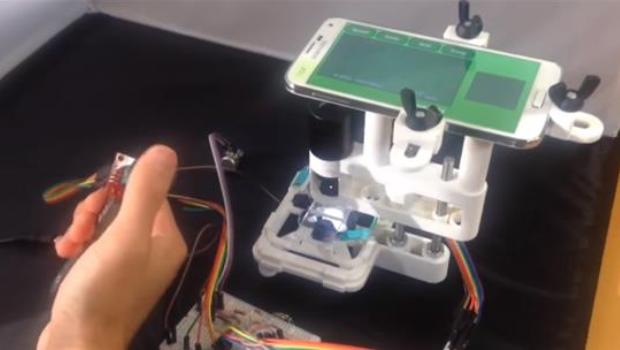There is a massive scale digitalization of classrooms. The idea is to make the learning process easy, fun, and interactive. This practice is highly applicable in the STEM fields. 3D printing can make the projects more interactive. Researchers at the Stanford University have decided to combine 3D printing with Smartphone technology. LuduScope is a 3D printing microscope powered by the smartphone. It aims to teach the principles of microbiology through the LuduScope.
The LuduScope cannot compete with the lab microscope in capabilities, but this interactive toy consists of a 3D printed body that attaches phone’s camera and flash for microscopy. It enables children to play and study a few light-seeking microbes such as Euglena. All in all, this is an excellent educational toy for use in classrooms. The word Ludus means ‘play’, ‘game’ or ‘elementary school’. A microscope eyegear is needed to get a good view. You can alter the microbes’ swimming direction with a joystick and view the outcome through their phone’s camera.
Ingmar Riedel-Kruse, the assistant professor of bioengineering that the LudoScope will bridge the gap in the interactive science education. While subjects like engineering or programming have toys which kids can play and learn, but microbiology lacks these facilities. Though the project was developed to play games with living cells on your phone, it later developed to enable advanced activities like self-driven inquiry, measurement, and instrument building. Riedel-Kruse developed the toy with graduate student Honest Kim. The results of the project have been published in the PLOS ONE journal. Other authors who have contributed to the writing include Lukas C. Gerber, Nate Cira, Daniel Chiu, Seung Ah Lee and Sherwin Yuyang Xia.
LudoScope is yet to be availed by classrooms. Riedel has arranged for additional grants to carry out experiments and develop the kit further to carry out interactive sessions in classrooms.
